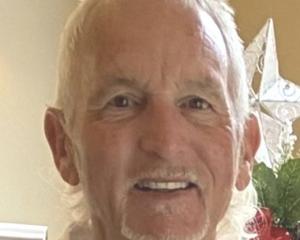
On Campbell Island he searched for and found a link to a bygone era.
A place of slaughter, deprivation, chronic hardship, drownings and heinous weather, the bleak and windswept Campbell Island discovered in 1810 by Captain Frederick Hasselborough of the sealing brig Perseverance, is a mere speck in the hostile Southern Ocean.
Sail 600km north, braving the gales and mountainous seas, to Bluff, then north again to Dunedin and Sawyers Bay you will find Ernie Warren, happily retired following a successful plastering career. Ernie and his wife Helen live in a modest block house, surrounded by trees and bush, with good neighbours and only a short drive to the Otago harbour. While Ernie lives in Sawyers Bay his mind often transports him far south to Campbell Island, where his father, Arthur, was the last of a succession of farmers in an ultimately unsuccessful bid to farm sheep on the remote island for wool and meat.
Arthur Warren landed on Campbell Island in December 1926 with his uncles, John and Harry, 19-year-old Stewart George and eight dogs. They were employed by a New Zealand syndicate to manage a flock of more than 5000 sheep first introduced to the island in 1895. Arthur stayed on for five years before returning to New Zealand’s mainland where he met his wife and had a family of five children.
Unfortunately, his father died when Ernie was only 4½ leaving the young boy, now an ageing man, with many unanswered questions.
Among Ernie’s prized possessions are his father’s Campbell Island watch, leather-clad compass, a fading photograph of three men on the island - although he is unsure which is his father - and his father’s short, unpublished, diary of his time on Campbell Island.

The run had been untended for nine months, so now hordes of rats ran rampant. The woodshed, store shed and homestead were overrun - everything not in tins had been devoured. Bags of flour, rice, peas, anything in packets had been ruined.
Only the petrol and kerosene had escaped.
On entering the house, they were met by an eye-watering reek of rats. Again, anything edible had been chewed - wallpaper, mattresses. Holes and runways riddled the walls. It was a most unwelcome welcome and, unless a random whaler should chance to call in, they were not expecting any relief for a year, when the Tutanekai would be back with supplies and to collect their wool-clip.
They were totally isolated until that time. No letters, no two-way or broadcast radio, no news of family or what was happening in the world. They had brought two homing pigeons to launch with a message announcing their safe passage on arrival. However, one refused to leave, while the other, more daring, set off in stormy weather and was never heard of again. The first pigeon met an unfortunate end a few months later — it drowned in the sheep dip.
With no other options, they set about making the house habitable, rat eviction top of the list. They were poisoned, shot and hunted by a black cat bought for the job. Eventually, the rats were frightened from the house and store shed but still had the run of the rest of the island.
How pleased would Arthur Warren have been to know that in the largest operation in the world to that date, the aerial eradication programme to rid Campbell Island of rats in 2001 was officially declared a complete success following monitoring in 2003.
After being aired and repaired, the quarters were made habitable. Then there was sheep mustering to be tackled.
The men found walking around the island tough going, confronted by its many creeks, bogs, gullies and hills.
Arthur described the weather as predominantly dull, grey and wet, with a piercing prevailing southwest to northwest wind giving the tussock and earth-hugging scrub a permanent eastward list. He supposed there was no place on earth with less sunshine.
The light-footed sheep managed the boggy ground with relative ease but humans had to be careful, lest they sank to their armpits. A horse left on the island by the previous farmers was found a month after their arrival, its corpse stuck fast in one of the numerous bogs.
Despite the hardships, the island soon had a hold on Arthur.
"When the fog lifts, and the clouds disperse, the moon and stars shine out with a radiance I have never seen anywhere else".
"The island repaid us. Our lives were more than bearable; they were good lives of open air work, of friendships made and valued, of interested watching the ways of new animals and birds, of a whole new environment remarkably different from anything we had seen before".
The Tutanekai, chartered by the syndicate to carry wool back to New Zealand, came and went. Whaling ships called. The farming party of five became seven, then two, then four, Arthur the only constant. He had no desire to leave the island and a life he loved, and even when the call came that all must return to New Zealand he had no desire to go. The island had become his home, he felt no other place made so strong a call on him and he vowed he would return at the first opportunity.
Arthur Warren’s diary perhaps also gives credence to a legend, maybe fiction, possibly fact, about an exiled princess being marooned there a century earlier by a callous sea captain. Some accounts say she died within a year, other versions have her lingering for 20 years. In the cove next to their house, Arthur pulled away overgrowth to discover a path of neat white pebbles, which she may have made all those years ago.
Unbeknown to Arthur, he also corroborated one of the few foods disliked by rats. The farmers had great success growing vegetables in the virgin Campbell Island soil but unfortunately they were only feeding rats. The rats loved the garden. They played in it, lived in it and lived on it. When the farmers pulled a swede they would find them completely hollowed out to the shell of the skin. The rats ate radishes, lettuce, potatoes, peas, cauliflower, everything but cabbages.
Previously, the French scientific expedition to Campbell Island in 1874 was dismayed to find upon landing at Garden Cove that only a few sad-looking cabbages had survived in the garden.
In a newspaper report during a trip back to New Zealand, Harry Warren described the wildlife.
"Albatross are very plentiful, and also sea lions, mollyhawks, and terns. The sea lions are harmless unless interfered with, but can become very ferocious if anyone meddles with them. The sea elephants, on the other hand, are very friendly so friendly, indeed, that they do not take any notice even if you lie on them!"

By April, with winter approaching and no boat likely to come until summer, they faced a winter surviving on their remaining tea and a ready supply of mutton and tobacco.
Their diet over the next four months followed a pattern.
Breakfast was fried chops with a slice of liver. Lunch was often a broth of sheep’s head, shanks, kidney (while it lasted), richly thickened with sheep’s blood. For dinner, coming in wet and weary after completing their day’s work, the evening meal would be grilled mutton, stewed mutton, roast mutton or boiled mutton followed by tea and a smoke.
Supper consisted of cold mutton or a leftover chop.
They tried fishing but the numerous seals, sea-lions, elephant seals and leopard seals were far more successful. They did manage to catch a few rock-dwelling fish, which they relished, and occasionally ate shags when they yearned for a change of diet.
All but one of the party thrived on this diet. Harry became very sick after refusing to eat the liver and kidney, missing the valuable nutrients they contain. Arthur described his condition as " touch and go".
Kerosene for their lamp had also run out, Arthur, who earned the nick-name "the professor" made candles out of tallow and manufactured buttons out of boiled sheep hooves.
The plight of the abandoned farmers became "news" after members of the public wrote to newspapers, including the Otago Daily Times, pleading for the government to bring the men home. Finally, in July 1931, during a period of the worst weather possible, the Tamatea was chartered to bring the men home. The captain described the voyage as the roughest in his 37 years, during which some of the returning dogs died.
Arriving at Bluff with their 124 bales of wool and 102 seal skins (which they had a licence to obtain), the four must have looked a sight. Their clothes had been repaired many times, their footwear was completely worn out.
The seal skins, worth about five shillings, were seized by customs as they attracted duty of a pound per pelt. Proceeds from the wool sale were claimed for the rescue boat, leaving the Warrens penniless.
The farming lease was declared forfeit by the government in 1934 and the following year the whole of the Auckland Islands were gazetted a reserve for protection of the flora and forna.
Arthur finishes his diary: "And when people say, ‘You must be loathe the site of mutton’, my answer is invariably, ‘It is my favourite meat’."

Campbell Island
Eleven kilometres from end to end and an average of 6.5km wide, Campbell Island has six distinct peaks over 300m.
On average, only four days a month have no rain, sunshine hours are a third of New Zealand’s and it is subject to frequent gales.
It was plundered for pelts, oil and whale bone until the turn of the century.
Captain Frederick Hasselborough, who discovered Campbell Island in 1810, kept the discovery a secret before returning on Perseverance and slaughtering 15,000 seals for their pelts.
Once the seals were wiped out, that industry was replaced by the whalers. Campbell Island is one of the main breeding grounds for southern right whales.
At one time, two whaling stations worked the island, one in North West Bay and one in North East Harbour. Farming started on the island in 1895, the lease going through several owners before it was finally abandoned in 1931.
In 1941, a coastal watching station was set up at Tucker Cove before enduring as a meteorological station after the war ended.
In 1998, Campbell and the other four sub-antarctic islands were listed as a World Heritage Area recognising their "outstanding natural value".
Today the Department of Conservation maintains a presence on the island, monitoring the flora and fauna, doing research and maintenance.
A small number of cruise ships bring visitors, who each pay an additional impact fee that helps cover quarantine costs, boardwalks and conservation staff time.











